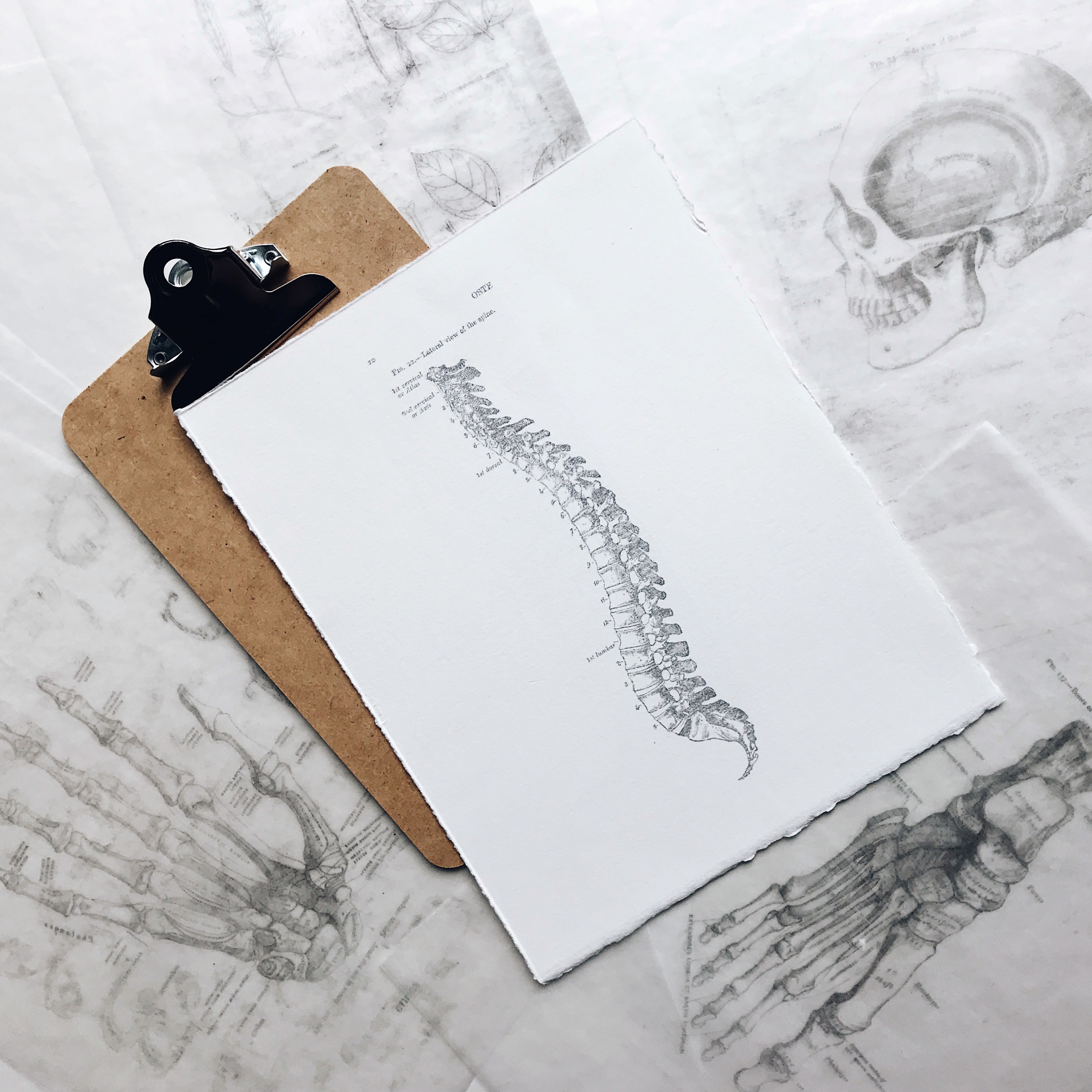
Published 2020-09-27
Keywords
- sitting position,
- low back pain,
- finite element analysis,
- orthotic devices,
- biomechanics
How to Cite
Copyright (c) 2020 McGill Journal of Medicine

This work is licensed under a Creative Commons Attribution-NonCommercial-ShareAlike 4.0 International License.
Abstract
Low back pain can be caused by prolonged sitting, originating in the sacroiliac joint (SIJ) in up to 30% of patients. The goal of this study was to develop a finite element model of the lower back and pelvis to study sitting configurations that could minimize the loads in the SIJ while sitting. The configurations were based on chair designs with geometries known to show some benefits according to literature: a 5° downward seat pan tilt and a 20° backrest recline. Both chairs were evaluated in neutral spine position with upright posture and 30° forward leaning configurations. A finite element model of the lumbar spine, pelvis and femurs was developed to compute the reaction forces at the SIJ. The intricate spinal geometry was simplified, and isotropic material properties were assumed for all components. The chair reaction forces were first computed analytically, then inputted as loads on the model. The results demonstrate that the improved sitting configuration reduced the loads in the SIJ compared to a conventional chair in both upright and forward leaning positions by 5.57 % body weight (BW) and 14.18 %BW, respectively. The proposed sitting configuration with a downward inclined seat pan and forward leaning back was shown to be an effective method to reduce SIJ loads.
Downloads
References
- Bontrup C, Taylor WR, Fliesser M, Visscher R, Green T, Wippert PM, et al. Low back pain and its relationship with sitting behaviour among sedentary office workers. Appl Ergon. 2019 Nov 1;81:102894.
- Get Canada Standing. Active and Productive working. Sit-stand solutions. [Internet]. [cited 2020 Jul 15]. Available from: http://getcanadastanding.org/
- Joukar A, Chande RD, Carpenter RD, Lindsey DP, Erbulut DU, Yerby SA, et al. Effects on hip stress following sacroiliac joint fixation: A finite element study. JOR SPINE [Internet]. 2019 Dec 20 [cited 2020 Jul 17];2(4). Available from: https://onlinelibrary.wiley.com/doi/abs/10.1002/jsp2.1067
- Sembrano JN, Polly DW. How Often Is Low Back Pain Not Coming From the Back? Spine (Phila Pa 1976) [Internet]. 2009 Jan 1 [cited 2020 Jul 17];34(1):E27–32. Available from: http://journals.lww.com/00007632-200901010-00023
- Rashbaum RF, Ohnmeiss DD, Lindley EM, Kitchel SH, Patel V V. Sacroiliac Joint Pain and Its Treatment. Clin Spine Surg [Internet]. 2016 Mar [cited 2020 Jul 17];29(2):42–8. Available from: http://journals.lww.com/01933606-201603000-00002
- Vleeming A, Schuenke MD, Masi AT, Carreiro JE, Danneels L, Willard FH. The sacroiliac joint: an overview of its anatomy, function and potential clinical implications. J Anat [Internet]. 2012 Dec [cited 2020 Jul 17];221(6):537–67. Available from: http://doi.wiley.com/10.1111/j.1469-7580.2012.01564.x
- Kiapour A, Joukar A, Elgafy H, Erbulut DU, Agarwal AK, Goel VK. Biomechanics of the sacroiliac joint: Anatomy, function, biomechanics, sexual dimorphism, and causes of pain. Int J Spine Surg [Internet]. 2020 Feb 1 [cited 2020 Jul 17];14(Suppl 1):S3–13. Available from: /pmc/articles/PMC7041664/?report=abstract
- Broy SB, Kemmis KL. Physical Therapy, Physical Modalities, and Exercise Regimens in the Management of Osteoporosis. In: Osteoporosis: Fourth Edition. Elsevier Inc.; 2013. p. 1667–89.
- Starrett K. Becoming a Supple Leopard 2nd Edition: The Ultimate Guide to Resolving Pain, Preventing Injury, and Optimizing Atheletic Performance [Internet]. 2nd ed. Victory Belt Publishing Inc.; 2016 [cited 2020 Jul 15]. Available from: https://www.chapters.indigo.ca/en-ca/books/becoming-a-supple-leopard-2nd/9781628600834-item.html
- Claus AP, Hides JA, Moseley GL, Hodges PW. Thoracic and lumbar posture behaviour in sitting tasks and standing: Progressing the biomechanics from observations to measurements. Appl Ergon. 2016 Mar 1;53:161–8.
- Harrison DD, Harrison SO, Croft AC, Harrison DE, Troyanovich SJ. Sitting biomechanics part I: Review of the literature. J Manipulative Physiol Ther. 1999 Nov 1;22(9):594–609.
- Van Houcke J, Schouten A, Steenackers G, Vandermeulen D, Pattyn C, Audenaert EA. Computer-based estimation of the hip joint reaction force and hip flexion angle in three different sitting configurations. Appl Ergon. 2017 Sep 1;63:99–105.
- Physio Med. Correct Sitting Posture: Office. Leeds;
- Fettweis T, Onkelinx MN, Schwartz C, Demoulin C, Croisier JL, Vanderthommen M. Relevance of adding a triangular dynamic cushion on a traditional chair: A 3D-analysis of seated schoolchildren. Clin Biomech [Internet]. 2017 [cited 2020 Jul 15];49:113–8. Available from: www.elsevier.com/locate/clinbiomech
- Weston E, Le P, Marras WS. A biomechanical and physiological study of office seat and tablet device interaction. Appl Ergon. 2017 Jul 1;62:83–93.
- O’Sullivan K, O’Sullivan P, O’Keeffe M, O’Sullivan L, Dankaerts W. The effect of dynamic sitting on trunk muscle activation: A systematic review. Appl Ergon. 2013 Jul 1;44(4):628–35.
- Ellegast RP, Kraft K, Groenesteijn L, Krause F, Berger H, Vink P. Comparison of four specific dynamic office chairs with a conventional office chair: Impact upon muscle activation, physical activity and posture. Appl Ergon. 2012 Mar 1;43(2):296–307.
- Aota Y, Iizuka H, Ishige Y, Mochida T, Yoshihisa T, Uesugi M, et al. Effectiveness of a Lumbar Support Continuous Passive Motion Device in the Prevention of Low Back Pain During Prolonged Sitting. Spine (Phila Pa 1976) [Internet]. 2007 Nov [cited 2020 Jul 15];32(23):E674–7. Available from: http://journals.lww.com/00007632-200711010-00028
- Eichenseer PH, Sybert DR, Cotton JR. A Finite Element Analysis of Sacroiliac Joint Ligaments in Response to Different Loading Conditions. Spine (Phila Pa 1976) [Internet]. 2011 Oct 15 [cited 2020 Jul 20];36(22):E1446–52. Available from: http://journals.lww.com/00007632-201110150-00017
- Clauser CE. Weight, volume, and center of mass of segments of the human body. Wright-Patterson Air Force Base, Ohio; 1969.
- The National Library of Medicines Visible Human Project.
- Driscoll M. Design, Optimization, and Evaluation of a Fusionless Device to Induce Growth Modulation and Correct Spinal Curvatures in Adolescent Idiopathic Scoliosis. [Montréal]: École Polytechnique de Montréal; 2011.
- Shahar R, Zaslansky P, Barak M, Friesem AA, Currey JD, Weiner S. Anisotropic Poisson’s ratio and compression modulus of cortical bone determined by speckle interferometry. J Biomech [Internet]. 2007 [cited 2020 Jul 15];40:252–64. Available from: www.elsevier.com/locate/jbiomech




